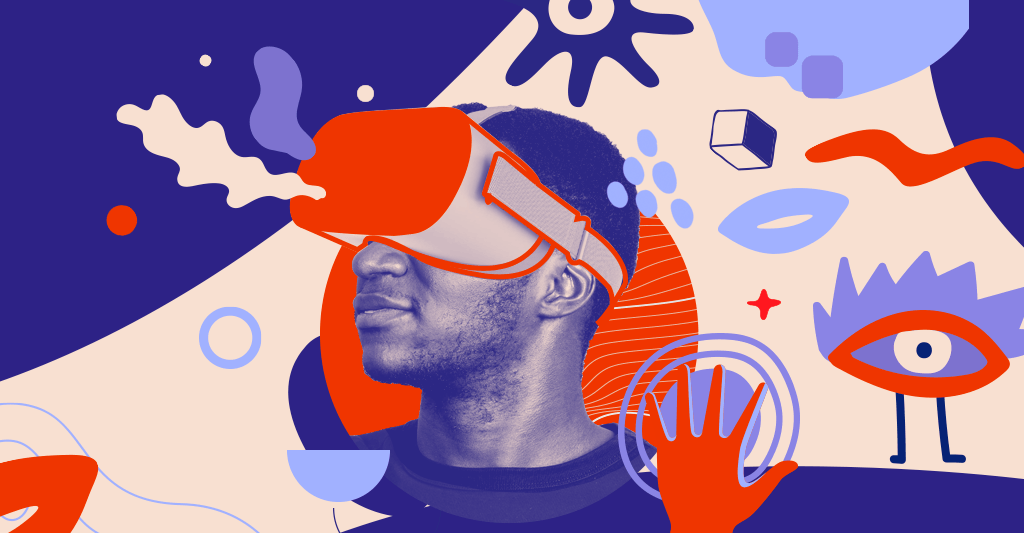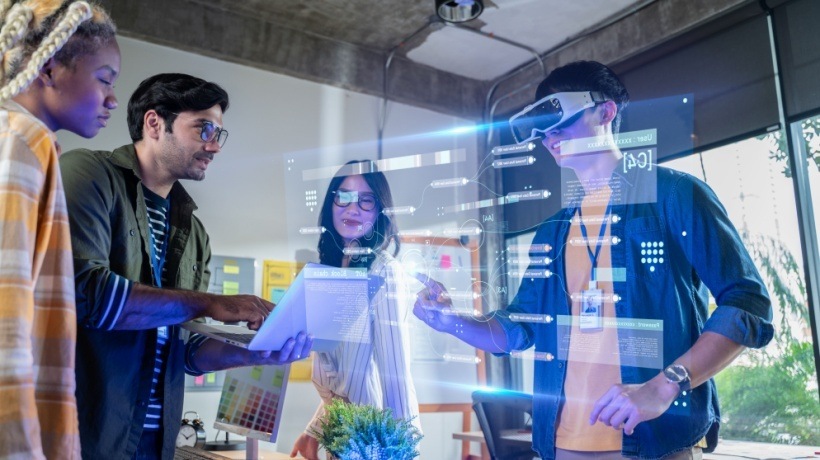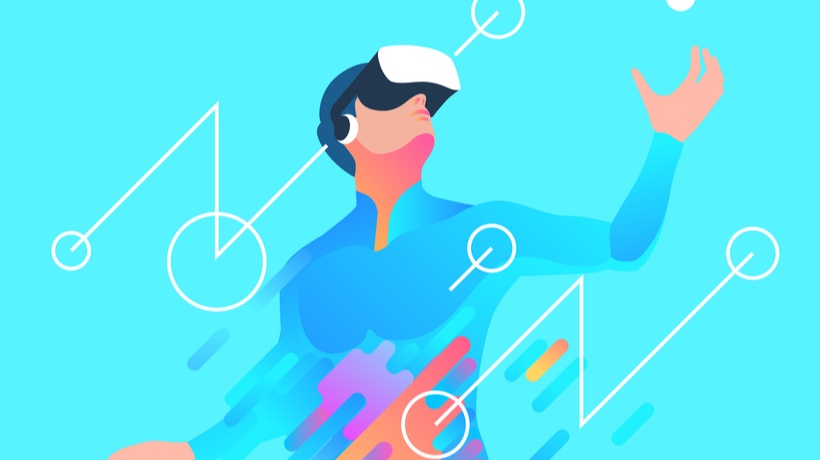Take A Journey Through VR Insights With SweetRush
Growing up, I loved reading. We had an understanding in our house; the one activity you would never get in trouble for was reading—no matter how long you stayed up past your bedtime. I was especially drawn to a series; I loved diving into a new world knowing there was more than one book. My favorite book in a trilogy was always the second book. That was where things got really juicy, where the mission began. That’s what I love about this VR training eBook.
It’s the sequel [1], the book in the series where, having established the background of the new world, we’re ready to start the mission. Our mission in this eBook is to equip you with the knowledge, the confidence, and the game plan to transform your training programs.

VR Training In A Time Of Change
It’s no secret that before COVID-19, Virtual Reality (VR), among other new technologies, was being adopted by Learning and Development (L&D) with much success in many different industries. And then we were thrown into a time of immense change and uncertainty.
Not only has 2020 been interesting and challenging, but it’s also been a driver of innovation. Working with immersive technology has shown us new ways we can come together, and it can help us continue forward the momentum in digital transformation, a critical need for all organizations today and in the future.
Although VR was not created for a global pandemic, it’s a great solution to the challenges COVID-19 poses. VR helps us come together to learn together safely.
Getting Started With VR Training: The Essential Guide
Sometimes getting started can be overwhelming.
This eBook lets us cut through the noise and deluge of information about VR for enterprises by looking at VR through the lens of L&D. This is a simple yet informational read that will leave you excited and ready to explore the possibilities for your future training.
You will walk away with these key takeaways:
- How to speak to stakeholders about the efficiency and success of VR for L&D to gain buy-in
- What statistics and case studies can strengthen your case for incorporating VR into parts of your current training
- How to identify the areas of your training that are good candidates for VR
- What key factors to consider when looking at budget
- How to think beyond the moment and consider the scalability and longevity of your program
- What to ask when evaluating potential partners to collaborate with for your program
- How to create a blueprint for your VR training program
- How to gain the clarity and confidence to start creating a VR training program for your organization
Let’s break down the chapters to explain why I love them and what they address.
1. Training For The Modern World: Proven, Effective VR Use Cases
In chapter 1, we begin our journey. Like any good sequel, we begin with a recap of the current state of the industry. We then move on to timely advice on how to make a case for using VR at your company.
One of the exciting aspects of VR is its endless possibilities for many different industries. In this chapter, we speak of the power of VR in Instructional Design and describe the positive impact on the business side of L&D as well.
You will leave this chapter with a solid footing in the VR training world; you’ll know which types of training are ripe for VR and how to prove the efficiency of VR training to the decision-makers in your organization.
2. The VR Investment: Cost, ROI, And Gaining Buy-In
This is slightly embarrassing to admit, but even before COVID-19, you could often find me watching home remodeling shows on a Friday night. While I love seeing the designs, planning, and work come together at the end of every episode, I mostly enjoy the moment when the designer sits down with the homeowner to talk about the budget.
Budget is more than just agreeing on a number; it’s about the longevity of the plans and scalability for the future. It’s important to think about how the home you design now will meet your future needs.
Does the money you are putting in equate to how much the value of the home will increase after renovations? Can you get all members of your household on board with your reasoning? They build intelligently after considering all the aspects of what these decisions mean.
That’s how we approach our VR projects; we craft them intelligently after going through the key considerations with our clients. We care about the way we build your solution. We want it to be your “dream home.”
In this chapter, we take you through key considerations for your bottom line, the state of the market and impact of COVID-19, key options that can impact costs, your ROI picture, and best practices for gaining buy-in.
3. VR Learning Analytics: A New World Of User Data Tied To Performance Outcomes
Before joining SweetRush as an XR Producer, I worked in immersive tech for media and entertainment. Back then, I considered it a win when someone took off the headset and proclaimed that what they had experienced was entertaining or would make them watch the movie we were marketing—or, better yet, that it had affected them in an emotional way.
Once I transitioned to working in the L&D world, I realized we had to provide more than entertainment with our VR. We had to prove that the learning experience was effective. And what happens inside the headset is just the beginning—what really matters is what learners apply to their jobs after taking off the headset.
Learning analytics is key. Our clients need to be able to track data in the headset, data that can be exported to show the effectiveness of the training, areas of improvement, and areas of success on both an individual and a global level. When combined with measurement data collected outside the headset, VR data makes a powerful case for training evaluation. This chapter dives into developments in VR analytics and how to make the best use of the data you’re tracking.
4. VR Training Trends: New Opportunities To Innovate
I would like to say that I was an innovator as a teenager, that I was ahead of the curve, building computers in my free time and wearing the most cutting-edge fashion. But, alas, I was not. It wasn’t until later in life, when I started working in emerging tech, that I discovered my love for innovation.
The moment that changed me was seeing the many ways that VR could make a positive impact οn the world. This medium could not only entertain but also change behavior. And that power is directly applicable to our work in L&D.
This industry is constantly evolving, progressing, and challenging itself to see what it can do next. In this chapter, we discuss the trends—the proven ways that VR is affecting L&D. This chapter walks you through the new developments in VR for learning, including multi-learner experiences and instructor-led learning, facial and voice recognition, body tracking, and biometric feedback.
5. Choosing A Partner For Your VR Training Programs
Apps, apps, so many apps. There’s an app for almost any need in today’s world. Delivery apps, dating apps, fitness apps, apps to find apps—the list is never-ending. Matchmaking apps are huge—need to find a life partner or the right pet? Need to find the right city to suit your personality? Or to match your next meal to your emotional state? There’s an app for that.
If only there were an app to pair you with the right partner to create your VR training program. This app doesn’t exist, but if I were to create that app, this chapter would serve as my blueprint.
With matchmaking apps, asking the right questions is critical. If you have a cat, you need to know whether your potential match is allergic, just as you would need to know whether your potential VR partner’s experience and values align with yours.
This chapter establishes why it’s beneficial to partner with a company that specializes in creating VR for L&D, and it includes a checklist that can help you determine who that partner is.
6. Putting It All Together: Creating An Aggressive Behavior De-Escalation VR Program
In my free time, I enjoy baking. I’m a bit of a renegade when it comes to baking, though. Following directions and science is important in order to make sure your baked goods turn out edible, but I don’t like to blindly follow the rules—I like to use research and development in my baking. I take a recipe, think about what I know from my experience and how I could make the recipe better, and then I begin testing.
My favorite moment of baking is not when it comes out of the oven perfectly golden, but when I see others enjoying my work. There are few things more rewarding than watching your research, planning, and execution result in a great end product. This chapter lets us see all the hard work come to fruition as we take you through a case study of one of our VR training projects.
We teamed up with CHRISTUS Health to develop a VR training program to teach learners how to de-escalate aggressive behaviors in patients and their family members. In this chapter, we walk you through the very beginning stages, when we determined whether we were the right partners and decided on the most beneficial program to use as a base for the VR. We also discuss planning for and gaining buy-in and conceptualizing and developing the best program, going beyond the headset with analytics, distribution, and rollout.
And, by the way, if you’re interested in learning more about this program, check out the webinar, available on demand, that I co-created with Tobias Washington, CHRISTUS Health’s Director of Learning Experience, Design, and Technology.
We Need To Keep Learning And That Means We Need To Keep Teaching
Life has a lot of unknowns right now, and at times I feel anxiety creep up on me—none of us really knows how or when the circumstances will change. What we do know is that we need to keep learning, and that means we need to keep teaching. We’re all looking for the glimmers of hope in our lives (personal and professional), and for me, I do see hope in how VR can keep us connected and moving forward.
Thank you for taking the time to go on this little journey with me. We hope that you enjoy this VR training eBook, Your Guide To VR Training Programs: Virtual Reality For Our New Reality, as much as we enjoyed writing it. Join the webinar VR Training Program Case Study to learn all you need to know through a success story!
References:
[1] Top Emerging Technology Trends And Their Impact On L&D









